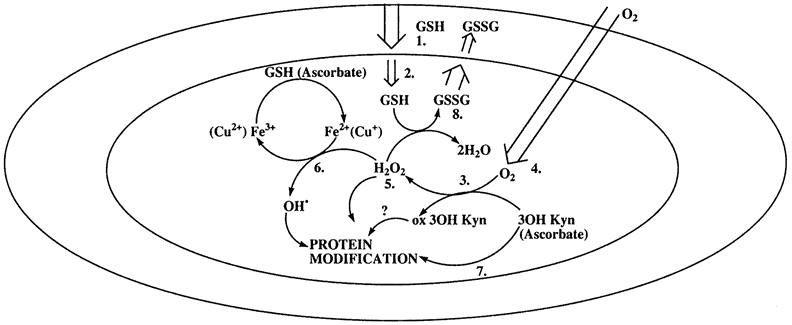

|
| Fig. 19. A model illustrating one of the current theories on nuclear cataract formation. In this model, the human lens is considered to be a two-compartment system. The outer cortex region of the lens may remain unchanged even though an advance nuclear cataract develops in the center. In the core region, the entry of antioxidants from the cortex becomes insufficient to offset oxidative stress, which occurs because of factors such as the auto-oxidation of ascorbic acid and 3-hydroxykynurenine. The reduced flux of antioxidants from the outer cortex is due to the development of a diffusion barrier. The putative diffusion barrier also slows the exit of small molecules from the lens nucleus. Importantly, this could lead to a buildup of oxidized glutathione (GSSG) and a reduction in the ability of the glutathione system to afford antioxidant protection. (Truscott RJW: Age-related nuclear cataract: A lens transport problem. Ophthalmic Res 32:185, 2000) |